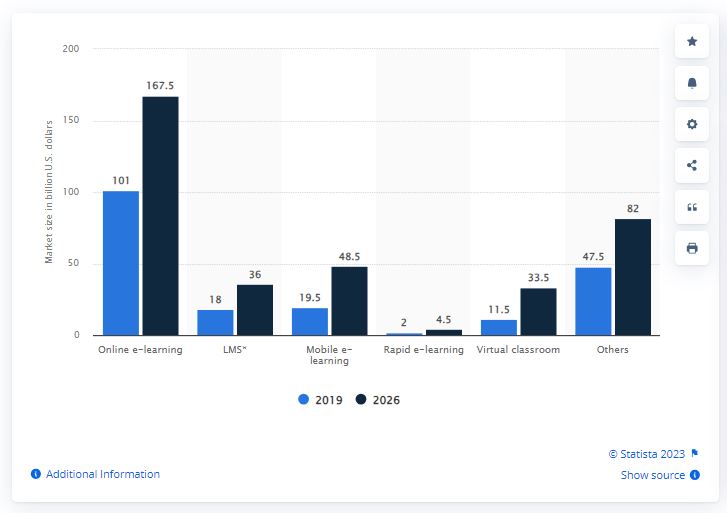Micro-influencers, individuals with a modest yet highly engaged online following, have emerged as powerful conduits for promoting education businesses.

In today’s dynamic landscape of education marketing, staying ahead of the curve is crucial for institutions and businesses alike.
As the digital realm continues to evolve, so do the strategies employed to reach prospective students and learners. One such strategy that has gained remarkable traction is the utilization of micro-influencers.
Micro-influencers, individuals with a modest yet highly engaged online following, have emerged as powerful conduits for promoting education businesses.
In the ever-expanding universe of social media, these influencers hold a unique advantage. They offer authenticity, relatability, and, most importantly, a heightened level of trust among their followers.
Consider this: A recent study by Sprout Social revealed that micro-influencers generate a staggering 22.2 times more engagement per post than their macro-influencer counterparts in the education sphere.
Furthermore, data from Nielsen illustrates that an astonishing 92% of consumers place their trust in recommendations from individuals they know or follow online, even if they have no personal acquaintance with them.
The Power of Micro-Influencers in Education Marketing
The influence of micro-influencers stems from their unique ability to connect with their audience on a personal level.

Recent data from Sprout Social underscores this point, revealing that micro-influencers generate a staggering 22.2 times more engagement per post than their macro-influencer counterparts in the education sector. This heightened engagement translates into a deeper, more meaningful connection with the target demographic.
Moreover, the trust factor plays a pivotal role in the effectiveness of micro-influencers within the realm of education marketing.
Nielsen’s research reveals that a remarkable 92% of consumers place their trust in recommendations from individuals they know or follow online, regardless of personal acquaintance. This high level of trust is particularly significant in education, where credibility and authenticity are paramount.
In an industry where authenticity and engagement are key, micro-influencers wield an influence that transcends mere numbers. Their power lies in their capacity to create authentic, relatable content that resonates deeply with prospective students and learners.
As we explore the dynamics of using micro-influencers to promote education businesses, it becomes evident that their influence is a force to be reckoned with, capable of driving engagement, fostering trust, and ultimately shaping the success of educational endeavors.
Cost-Effectiveness of Micro-Influencer Marketing
The average cost per post for a micro-influencer, ranging from $100 to $500, emerges as a fiscally responsible choice. In stark contrast, macro-influencers command fees that can soar to $5,000 to $10,000 per post.

This substantial disparity emphasizes the budget-friendly nature of micro-influencer campaigns. At a time when judicious resource allocation is paramount, education businesses can capitalize on this budget-friendly approach.
Micro-influencer marketing aligns well with fiscal realities while delivering amplified engagement and trust-building benefits.
Understanding the financial dynamics of micro-influencer marketing is pivotal. It reveals that, in comparison to their macro counterparts, micro-influencers offer an economically savvy solution.
By embracing the cost-effectiveness of micro-influencer campaigns, education marketers can achieve their goals while maintaining prudent financial stewardship, ensuring that every marketing dollar spent yields a substantial return on investment.
Implementing Micro-Influencer Marketing in Your Education Business
Incorporating micro-influencer marketing into your education business strategy is not just a trend; it’s a strategic imperative in today’s digital landscape. Let’s delve into the essential steps for a successful implementation.
![Higher Education Marketing 2023 and Beyond [Detailed Analysis], Higher Education Marketing, Education Marketing, Education PR, Digital PR, Public Relations, Digital Marketing, social media, SEO for Higher Education, Digital Marketing for Higher Education](https://firdoshkhan.in/wp-content/uploads/2022/11/Higher-Education-Marketing-Strategies-Post.jpg)
Begin by identifying micro-influencers who align with your education niche. The process involves meticulous research to pinpoint individuals whose content resonates with your target audience. Data-driven insights are crucial here, ensuring that you engage with influencers whose followers mirror your potential students.
Building strong relationships with selected micro-influencers is paramount. Taking the time to connect, understand their values, and share your educational mission fosters mutual trust. Authenticity in these relationships is key, ensuring that influencers genuinely align with your brand.
Setting clear goals and expectations is the next crucial step. Outline what you aim to achieve through collaborations—be it increased enrollment, improved brand awareness, or enhanced engagement. Transparency ensures that both parties are on the same page regarding objectives and outcomes.

Encourage creative freedom among micro-influencers when it comes to content creation. These influencers thrive when allowed to produce authentic, relatable content that resonates with their followers. Their unique voice and style contribute to building trust and engagement within your target audience.
Hence, implementing micro-influencer marketing in your education business is about forging authentic connections, setting clear objectives, and giving influencers the creative freedom they need to authentically promote your brand.
When executed effectively, these steps can yield significant benefits for your education business in terms of visibility, credibility, and enrollment rates.
Measuring Success and Future Trends in Micro-Influencer Marketing for Education
Micro-influencer marketing, when executed effectively, can yield substantial returns. Here, we delve into the crucial aspect of measuring success and explore future trends in this dynamic space.

Tracking and measuring return on investment (ROI) with metrics is fundamental. Metrics such as engagement rates, website traffic, and leads generated provide valuable insights into the effectiveness of your micro-influencer campaigns.
Recent data from Influencer Marketing Hub suggests that the average ROI for micro-influencer marketing in education is an impressive 3.5x, underscoring its potential for significant returns.
Real-life examples of education businesses leveraging micro-influencers abound. Leading online learning platforms, test prep companies, and universities have harnessed the power of micro-influencers to reach, engage, and convert prospective students.
These success stories serve as compelling evidence of the impact that well-executed micro-influencer campaigns can have on education businesses.

The trend of micro-influencer marketing in education is on a steady ascent. A recent study by Influencer Marketing Hub found that 76% of education businesses plan to increase their investment in micro-influencer marketing in 2023, indicating a growing recognition of its efficacy.
As we look ahead, future opportunities and strategies in this space are rife with potential. Emerging niches within education, such as STEM, business education, and language learning, present fertile ground for micro-influencer partnerships.
Moreover, as the digital landscape continues to evolve, embracing new platforms and technologies will be integral to staying ahead in the micro-influencer marketing game.
To Conclude
Education businesses stand at a crossroads of opportunity. The data and insights from this exploration underscore the transformative potential of micro-influencer marketing.
The message is clear: it’s time to harness this potential, embrace authenticity, and leverage the trust and engagement that micro-influencers offer to propel your education business into a brighter future.
In this journey through the world of micro-influencers, we’ve uncovered their power in driving engagement, building trust, and ultimately shaping the success of education businesses.
Moreover, the financial prudence they offer, with an average cost per post ranging from $100 to $500, as compared to the substantial fees commanded by macro-influencers, emphasizes their budget-friendly nature.



Pingback: Power of Social-Education Marketing Strategies for All Generations
Pingback: 15 Big Ideas That Will Shape Education Marketing in 2024?
Pingback: Why Educational Marketing Trumps Selling in Crises?